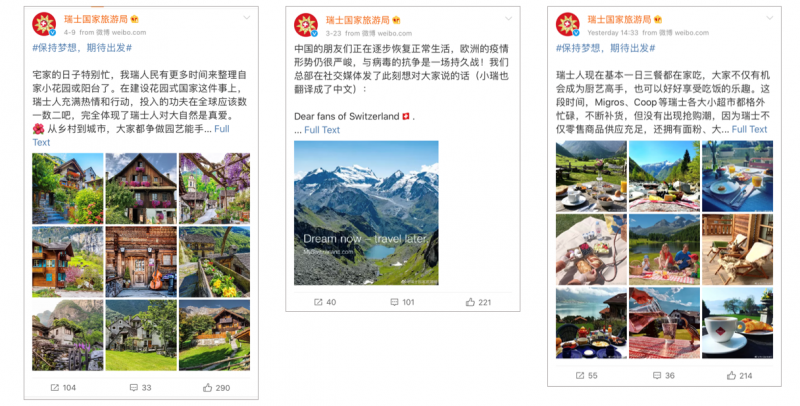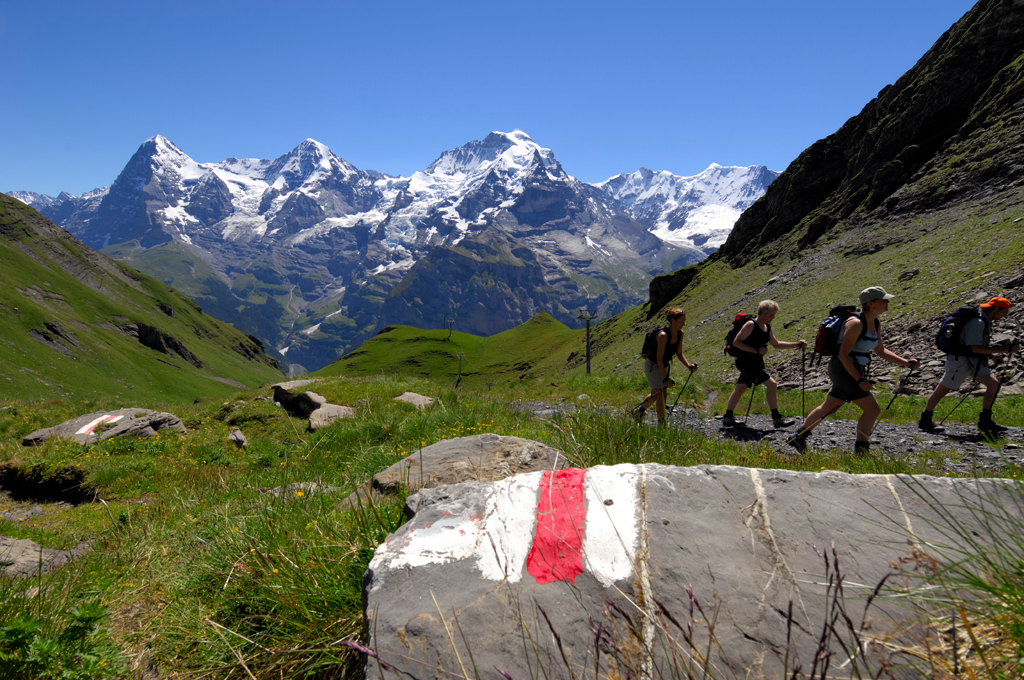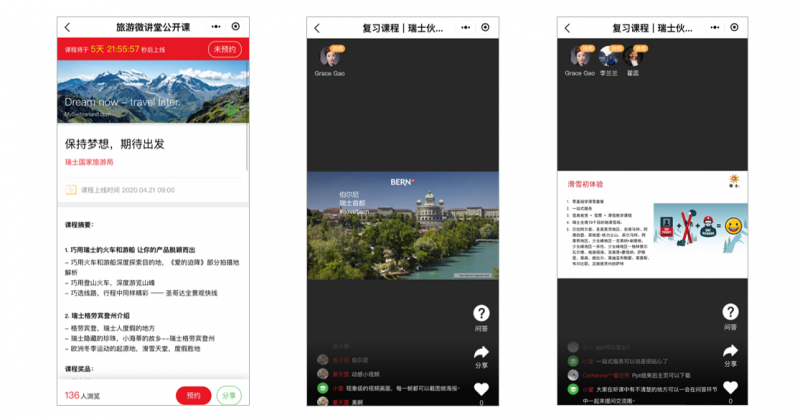A version of the interview originally appeared on Dragon Trail Interactive.
Few nations have courted China’s tourism market as proactively and dynamically as Switzerland. As the first European country to target Chinese travelers, it rode the waves of tour bus tourism beginning in the early 2000s, before gradually pivoting to Free Independent Travelers through combining centrally steered communication from Zurich with market expertise from its three Mainland offices.
While predicting the appetites of China’s post-coronavirus traveler is a game of educated guesswork, early signs point towards a prioritisation of health, avoiding crowds, and exploring nature — touristic assets that Switzerland has in abundance. When added to Switzerland Tourism’s vastly experienced China team, it helps explain the optimism of Simon Bosshart, Director China since 2006, who believes “Switzerland will go stronger out of this crisis than we entered it”.
Here, Bosshart discusses how Switzerland became a market leader, ways of connecting with China during coronavirus, and repositioning the country as a boutique destination for Chinese travelers.
Switzerland has been a market leader in Europe for attracting Chinese tourists. What marketing strategies and activities have worked best?
We’ve been doing marketing in China for over 20 years now, so this gives us a certain advantage. We invest over-proportionally into China and we believed in China when China was not an important market in tourism.
When you talk about the recipe for success, one thing is consistency, staying with the market and investing in the market. The second thing, is [our] team. We have 15 people on the ground and three offices in mainland China. [It’s] a mature team, a very senior team.
One last consistency is we try to always be very close to the market, and we put personal contacts, networks, and relationships in the front row.

Switzerland Tourism’s “Dream Now. Travel Later” campaign was well-received on Weibo and WeChat. Image: Switzerland Tourism
What has stayed consistent about your approach to the Chinese market over the past decade, and what has needed to evolve?
Today, we are not striving for the mass market from China. We’re striving for the guest which suits the destination of Switzerland most and that’s the individual traveler. Switzerland has been a travel destination for 150 years and we could never compete with others based on price.
Five years ago…we segmented our products and our market. We defined specifically summer outdoor and winter outdoor guests, plus cultural travelers, as our most important segments…[now] we say, come to Switzerland if you want to come for deep travel – for hiking, for biking, for skiing, for art, for some kind of cultural experience.
Technology-wise, everyone talks about digital channels. For our team in China, we believe it’s the way to communicate today, but this is not the solution alone. This is just the technical solution. The most important is to know who your guest is. So we’re talking about not just digital marketing, or social media marketing, or influencer marketing, but community marketing. Community marketing means you talk to ski clubs, you talk to art lovers, museum directors, to writers, to art collectors. You have to dive into the niche.
Are there any differences between your marketing strategy for China, and other East Asian markets?
The strength of Switzerland Tourism is that we are very decentralized, with independent marketing teams, led by personalities. With marketing, there’s not one correct solution for everything. In Korea, for example, we’re very strong with celebrity marketing and this relates to our market director there, who has built up a very strong network over the years to the celebrity world.
Japan is very much content driven, and is the oldest travel market for Switzerland, so here again we take a different approach.
We have certain central campaigns, but our strength is that the independence and the empowerment of the market is very high for Switzerland Tourism.

Switzerland Tourism hopes to attract more Chinese FITs with an interest in outdoor activities. Image: Switzerland Tourism
What advantages does Switzerland have for attracting Chinese tourists after the COVID-19 crisis has passed?
I strongly believe that the coronavirus will change us all, in our thinking. It brings us back to what is really essential in our lives, such as family.
They [Chinese travelers] might have more basic needs, like security, safety, more relaxed atmosphere, less crowded places, not just rushing through a place. Nature will become some sort of a new quality… so Switzerland will go stronger out of this crisis than we entered it. Not in terms of actual business, not in the short term. Switzerland will lose market share in the mass market business, but we will strengthen our positioning in the individual travel market.
A target is sustainable travel, in an ecological, economical, and social dimension. We’ll position Switzerland as a boutique destination, not a destination for a short weekend trip overseas. If you come to Switzerland, treat it as what it is. It’s a precious thing. It’s a boutique product you have to enjoy with all your senses. Come, stay, travel slow.
What does Switzerland Tourism do to promote off-the-beaten track destinations to Chinese travelers?
Chinese are much more curious to go off the beaten track. We have been working very early on some solutions, on the product side, for how to experience Switzerland off the beaten track.
First of all, the best thing that Switzerland has on this side, is we have a Swiss Travel Pass, which includes the entire public transportation system of Switzerland. This, for tourism, is an extremely precious tool to promote off the beaten track traveling. Chinese have really discovered this – China is by far the biggest market for this pass.
A second initiative is the Grand Tour of Switzerland, for self-drive. It’s a road experience in Switzerland, starting and ending in Zurich, so you can really experience the whole Switzerland on a self-drive basis, with everything that Switzerland has to offer, with mountain passes, all the UNESCO World Heritage sites along the route, a lot of castles, old villages.

Switzerland Tourism hosts CTA Live webinars to train the Chinese travel trade. Image: Switzerland Tourism
Switzerland Tourism is launching a new series of CTA Live online courses for the Chinese travel trade – why do you think it’s important to be doing B2B marketing to China, even during this period when international travel is frozen?
We started to do travel trade webinars two years ago. In a big country like China, we’re not able to reach out to the masses or all the agencies, boutique operators, and junior staff which need to be educated about Switzerland, so having such a platform, we consistently continue working with the Chinese travel trade. In addition to the webinars, we do have an e-learning platform, which is a self-study, which we’ve done for 13 years. And a third step is more networking with the travel trade for sales calls and taking it digital.
In the coronavirus environment, the only way that you can communicate with the travel trade or with anybody is digital channels, so it’s the right time to continue such an approach.
A longer version of the interview can be read here.
Edited by Richard Whiddington



